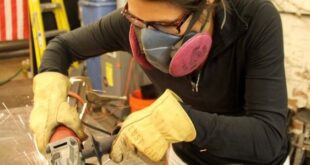Tungsten Inert Gas TIG welding Introduction Tungsten Inert Gas (TIG) welding also known as gas tungsten arc welding (GTAW) is a type of welding process that joins two pieces of metals using a non-consumable tungsten electrode. An inert gas is supplied to the welding torch to shield the joining metals …
Read More »Welding Temperatures Guideline
Welding Temperatures Guideline Introduction Controlling welding temperatures is of utmost importance in ensuring the quality and integrity of welds. The temperature at which welding takes place plays a significant role in determining the mechanical properties, metallurgical characteristics, and overall performance of the welded joint. Failure to control welding temperatures can …
Read More »Advantages and Disadvantages of TIG Welding
Advantages and Disadvantages of TIG Welding Introduction Tungsten Inert Gas (TIG) welding is a highly precise and versatile welding technique that is used in a wide range of industries, from aerospace and automobile manufacturing to construction and repair work. TIG welding is known for its ability to produce high-quality, precise …
Read More » Welding of Welders All about Welding and Welders
Welding of Welders All about Welding and Welders


